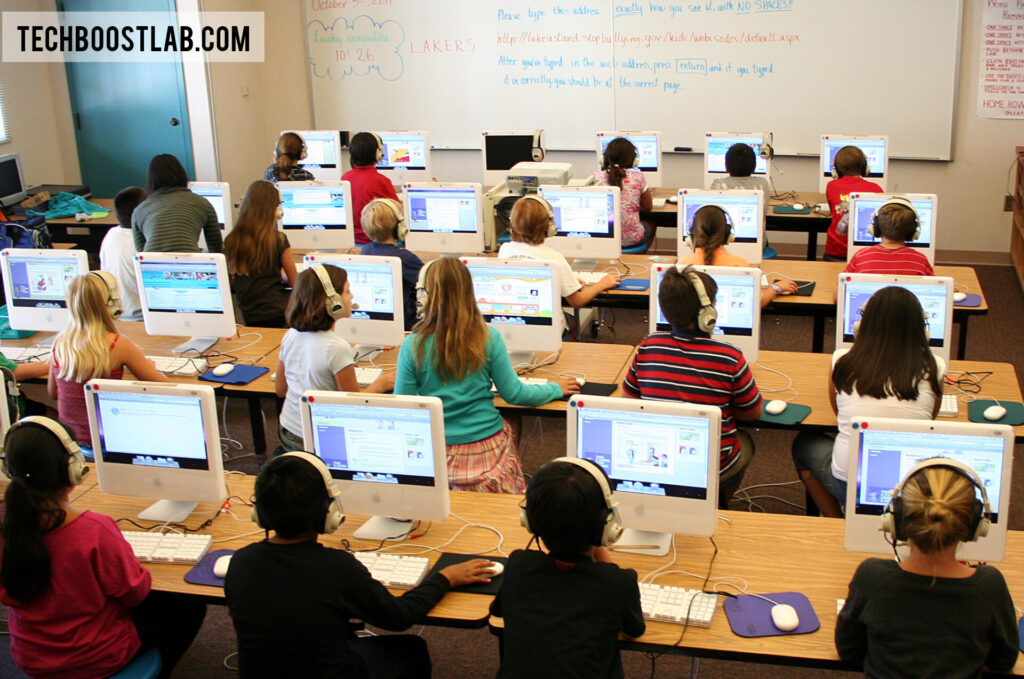All Computer Resources: How to Optimize and Manage
Introduction to All Computer Resources
In today’s technology-driven world, computers are essential for almost every activity—from personal use to business operations. To maximize their potential, it’s crucial to manage all computer resources effectively. These resources include physical components like the CPU, RAM, and storage devices, as well as software, applications, and networks. Proper management of these resources can dramatically improve your computer’s speed, performance, and functionality.
This guide will cover the different types of computer resources, how to optimize them, tools for managing them, common challenges, and future trends in computer resource management. You’ll also find answers to frequently asked questions to help you better understand how to keep your computer running at its best.
Types of Computer Resources
To fully understand computer resources, it’s important to break them down into distinct categories:
Hardware Resources
Hardware resources refer to the physical components of a computer. These include the CPU (central processing unit), RAM (random access memory), storage devices (hard drives or SSDs), and peripherals like printers and monitors. Each component plays a critical role in the overall performance of a computer.
- CPU: Often called the brain of the computer, the CPU handles most of the processing tasks.
- RAM: This stores temporary data that your computer needs to access quickly. More RAM allows for smoother multitasking.
- Storage Devices: HDDs and SSDs store your files and applications. SSDs are faster and more efficient than traditional hard drives.
Software Resources
Software resources include the operating system (OS), applications, and other programs running on your computer. The OS, such as Windows or macOS, manages hardware resources and provides the environment for applications to run. Applications themselves vary in resource demands, and managing them properly is crucial for smooth performance.
- Operating System: Manages hardware and software interaction.
- Applications: Programs that perform tasks, such as web browsers, word processors, or photo editors.
Network Resources
Network resources include routers, switches, and cloud services that allow computers to communicate with each other and the internet. For both personal and business use, a fast, reliable network is essential for productivity.
- Routers and Switches: These devices control traffic between computers and the internet.
- Cloud Services: Storing data in the cloud can save local resources and provide quick access from any device.
Data and Information Resources
Data resources refer to the files, databases, and information stored on your computer or network. Effective data management helps prevent storage overload, ensuring smooth performance.
- Local Data: Files and applications stored on your device.
- Cloud Data: Files stored online for easy access and backup.
Power Resources
Especially for laptops, power management plays an important role. Efficient power usage can extend battery life while maintaining performance. Desktops also benefit from energy-efficient power supplies and proper power settings.
How to Optimize All Computer Resources for Better Performance
Optimizing your computer resources helps ensure that your system runs smoothly and efficiently. Here’s how you can optimize different resources:
Hardware Optimization
Upgrading your hardware is one of the quickest ways to boost performance. Adding more RAM, upgrading to an SSD, or using a faster CPU can make a significant difference.
- RAM Upgrade: More RAM allows you to run multiple applications smoothly.
- SSD Upgrade: Replacing a traditional hard drive with an SSD can significantly reduce load times.
- Regular Maintenance: Cleaning your hardware (removing dust) can prevent overheating and extend component lifespan.
Software Optimization
For software, keeping your operating system and applications updated is essential. Updates often include performance improvements and security patches.
- Update Your OS: Regular updates ensure your OS is optimized for performance.
- Remove Unnecessary Programs: Uninstall applications you no longer use to free up resources.
- Manage Startup Programs: Disable programs that automatically start with your computer to improve boot times.
Network Optimization
To optimize your network, use quality equipment and ensure proper configuration. For businesses, monitoring network performance helps maintain high speeds.
- Upgrade Your Router: A high-quality router can improve your network’s speed and reliability.
- Monitor Bandwidth Usage: Use tools to monitor and manage the bandwidth consumption of different applications.
Data Optimization
Managing your data effectively can free up space and improve performance. Regularly clean out unnecessary files and back up important data.
- Delete Unnecessary Files: Regularly clean your hard drive to keep it from getting clogged with junk files.
- Back Up Data: Use cloud services or external storage for backups to keep your data safe.
Power Optimization
For laptops, adjust power settings to balance performance with battery life. For desktops, make sure your system is using energy-efficient components.
- Power Plans: Use your computer’s built-in power plans to optimize for performance or energy savings.
- Use Efficient Hardware: Install components that use less power without sacrificing performance.
Key Tools for Monitoring and Managing Computer Resources

There are several tools that can help you monitor and manage your computer resources:
System Monitoring Tools
Tools like Task Manager (Windows) and Activity Monitor (macOS) allow you to monitor the use of CPU, RAM, and storage by different applications. This can help you identify resource-hungry programs.
- Task Manager/Activity Monitor: Monitor real-time resource usage and terminate unnecessary programs.
- Resource Monitor: A built-in tool on Windows that provides more detailed information about how your system resources are being used.
Network Management Tools
Tools like Wireshark or NetFlow allow you to monitor network traffic, helping to identify bottlenecks or troubleshoot connectivity issues.
- Wireshark: A popular network protocol analyzer that helps troubleshoot network performance.
- NetFlow: Useful for businesses, it helps manage and optimize network performance.
Disk Management Tools
To manage storage resources, tools like CCleaner or Windows Disk Cleanup help you free up space by removing unnecessary files and optimizing data storage.
- CCleaner: A cleaning tool that removes junk files and frees up space.
- Disk Cleanup: A built-in tool on Windows that deletes temporary files, system junk, and more.
Backup Tools
Cloud storage services like Google Drive, Dropbox, or OneDrive are essential for backing up important files and freeing up local storage space.
- Google Drive/Dropbox: Store files in the cloud for easy access and backup.
- External Drives: Keep a physical backup of your most important data.
Common Challenges in Managing All Computer Resources
While managing computer resources is essential, there are challenges:
Hardware Limitations
Older computers may struggle to keep up with modern software. If you’re experiencing frequent crashes or slowdowns, consider upgrading.
Software Compatibility
Sometimes, newer software isn’t fully compatible with older systems, leading to performance issues. Ensure your system meets the requirements before installing new applications.
Network Bottlenecks
Slow network speeds can be frustrating, especially for tasks that rely heavily on the internet, like cloud services. If you’re experiencing bottlenecks, consider upgrading your router or internet plan.
Data Overload
Too much data on your hard drive can slow down performance. Regularly deleting unnecessary files and using external or cloud storage can help.
Security Threats
Malware and other security threats can compromise your system and slow it down. Use antivirus software and keep your system updated to protect against these threats.
Future Trends in Computer Resource Management
As technology continues to evolve, so does the way we manage computer resources:
Artificial Intelligence (AI) and Automation
AI is being used more frequently to automatically manage system resources. It can optimize performance without the need for manual intervention.
Cloud Computing
The shift towards cloud computing reduces the reliance on local hardware. Storing data in the cloud can free up local resources and provide easier access.
Edge Computing
Edge computing brings data processing closer to the source, improving speed and reducing latency for applications that require real-time responses.
Enhanced Cybersecurity
With the increase in cyber threats, more sophisticated cybersecurity tools are being developed to protect systems from malware and data breaches.
Frequently Asked Questions (FAQs)
Q1: How do I check which applications are using the most resources?
You can use Task Manager on Windows or Activity Monitor on macOS to see how much CPU, RAM, and disk space each application is using. These tools help identify programs that are consuming excessive resources.
Q2: What can I do if my computer is running slow?
First, try closing unused applications and disabling startup programs. If that doesn’t help, consider upgrading your RAM or switching to an SSD. Keeping your system updated and performing regular cleanups can also improve speed.
Q3: How can I optimize my network for faster internet?
To improve network speed, consider upgrading your router or internet plan. You can also use tools like Wireshark to monitor network traffic and identify any issues slowing down your connection.
Q4: How often should I back up my data?
It’s a good idea to back up important data regularly—at least once a week. You can use cloud storage services like Google Drive or Dropbox for automatic backups, or external drives for physical copies.
Q5: What is cloud computing, and how does it help with resource management?
Cloud computing allows you to store data and run applications remotely, reducing the load on your local computer. This frees up local resources and provides access to more scalable
storage and processing power.
Conclusion
Effectively managing all computer resources is essential for maintaining a fast, reliable system. By optimizing hardware, software, networks, and data, you can improve performance and reduce the risk of problems like slowdowns or crashes. As technology continues to evolve, staying updated on future trends and using the right tools will help you get the most out of your computer resources.














Post Comment